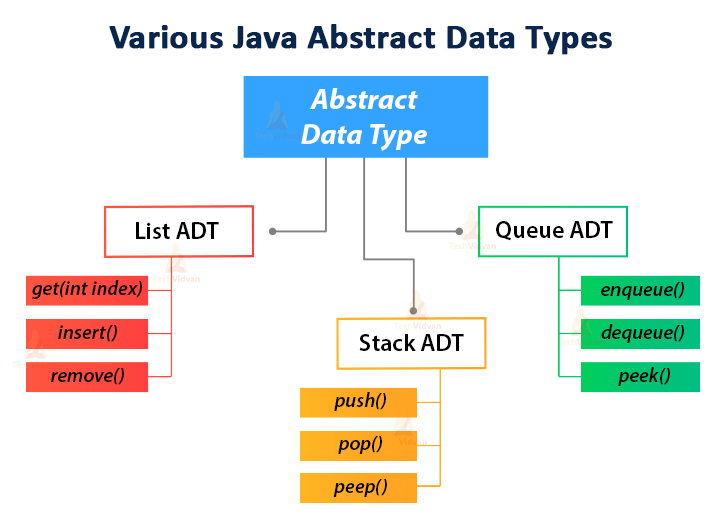
In Java, as in many other programming languages, an Abstract Data Type (ADT) refers to a high-level, abstract representation of a data structure and the operations that can be performed on it, without specifying the concrete implementation details. Java is an object-oriented language, so creating an ADT typically involves defining a class that encapsulates data and methods to perform operations on that data.
Here's how you can create an ADT in Java:
Define a Class: Define a class that represents the abstract data type. This class will include attributes for storing data and methods for performing operations on that data.
Encapsulation: Encapsulate the data and methods within the class. This means that the class's attributes and methods are self-contained within the class and can be accessed only through well-defined interfaces (i.e., methods).
Define Methods: Create methods within the class to represent the operations that the ADT should support. The methods should operate on the internal data and provide the desired functionality.
Use Constructors: Define constructors to set up the initial state of the ADT when an object is created from the class.
Document the ADT: Provide clear and concise documentation within the class, including comments and Javadoc comments, to explain how the ADT should be used, what each method does, and any constraints or invariants.
Instantiate Objects: Create objects (instances) of the class to work with the ADT. Each object represents a distinct instance of the ADT.
Here's a simplified example of creating an ADT for a stack in Java:
public class Stack {
private int[] items;
private int top;
public Stack(int capacity) {
items = new int[capacity];
top = -1;
}
public void push(int item) {
if (!isFull()) {
items[++top] = item;
}
}
public int pop() {
if (!isEmpty()) {
return items[top--];
}
return -1; // Placeholder for an empty stack
}
public boolean isEmpty() {
return top == -1;
}
public boolean isFull() {
return top == items.length - 1;
}
}In this example, the Stack class encapsulates an array (items) and provides methods for the stack operations (push, pop, isEmpty, and isFull).
You can then create instances of the Stack class and use them to work with a stack data structure:
Stack stack = new Stack(5);
stack.push(42);
stack.push(123);
System.out.println(stack.pop()); // Outputs: 123
System.out.println("Is empty? " + stack.isEmpty()); // Outputs: Is empty? false
This demonstrates how an ADT can be implemented in Java using classes and objects to encapsulate data and behavior. Java's object-oriented nature makes it well-suited for creating and working with custom ADT.
Thank you.